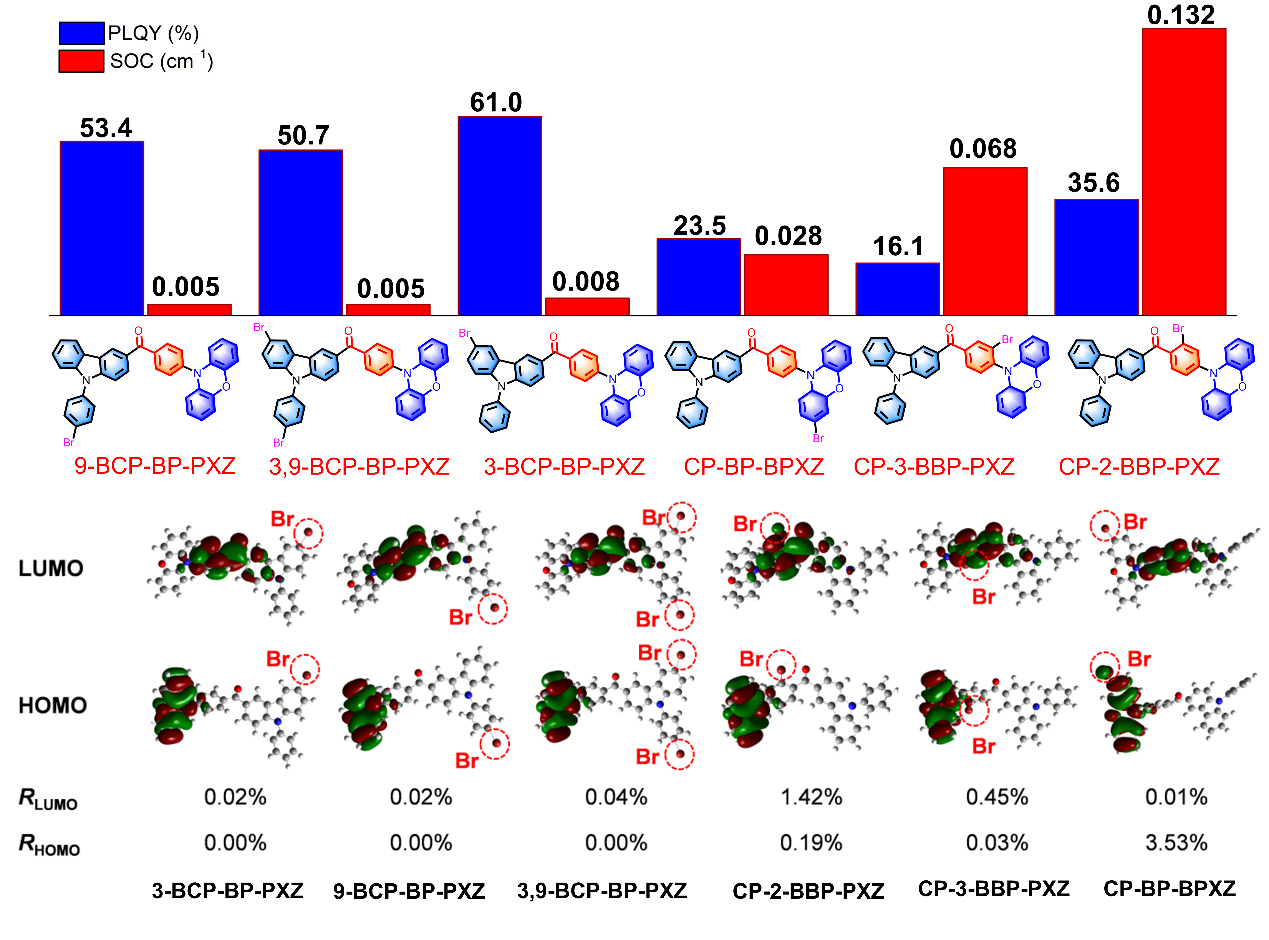
Heavy atom effect is beneficial to delayed fluorescence by enlarging spin-orbit coupling (SOC). The introduction of halogen atoms to luminogenic molecules is a widely used approach to realize heavy atom effect, but the positions of halogen atoms may exert quite different impacts on the photophysical properties of the molecules. To confirm this hypothesis, herein, bromine atoms are introduced on a delayed fluorescence luminogen comprised of benzoyl acceptor and phenoxazine and phenylcarbazole donors at different positions. The resultant luminogens show great differences in photoluminescence (PL) efficiencies and delayed fluorescence lifetimes in solid state, which could be attributed to different orbital contribution ratios of bromine atoms to molecular frontier orbitals and thus varied SOC interactions, as revealed by spectroscopy, crystallography and theoretical calculation. The luminogens with bromine atoms on the phenylcarbazole units hold much better PL properties than those with bromine atoms on other positions, and behavior efficiently as emitters in organic light-emitting diodes, furnishing high external quantum efficiencies of up to 28.6% and small efficiency roll-offs. The structure-property relationship gained in this work can provide guidance for the further design of efficient luminescent materials.
Postdoctoral researcher Jingwen Xu in our group is the first author of this article, and this work has been published on Advanced Optical Materials (DOI: 10.1002/adom.202102568).
